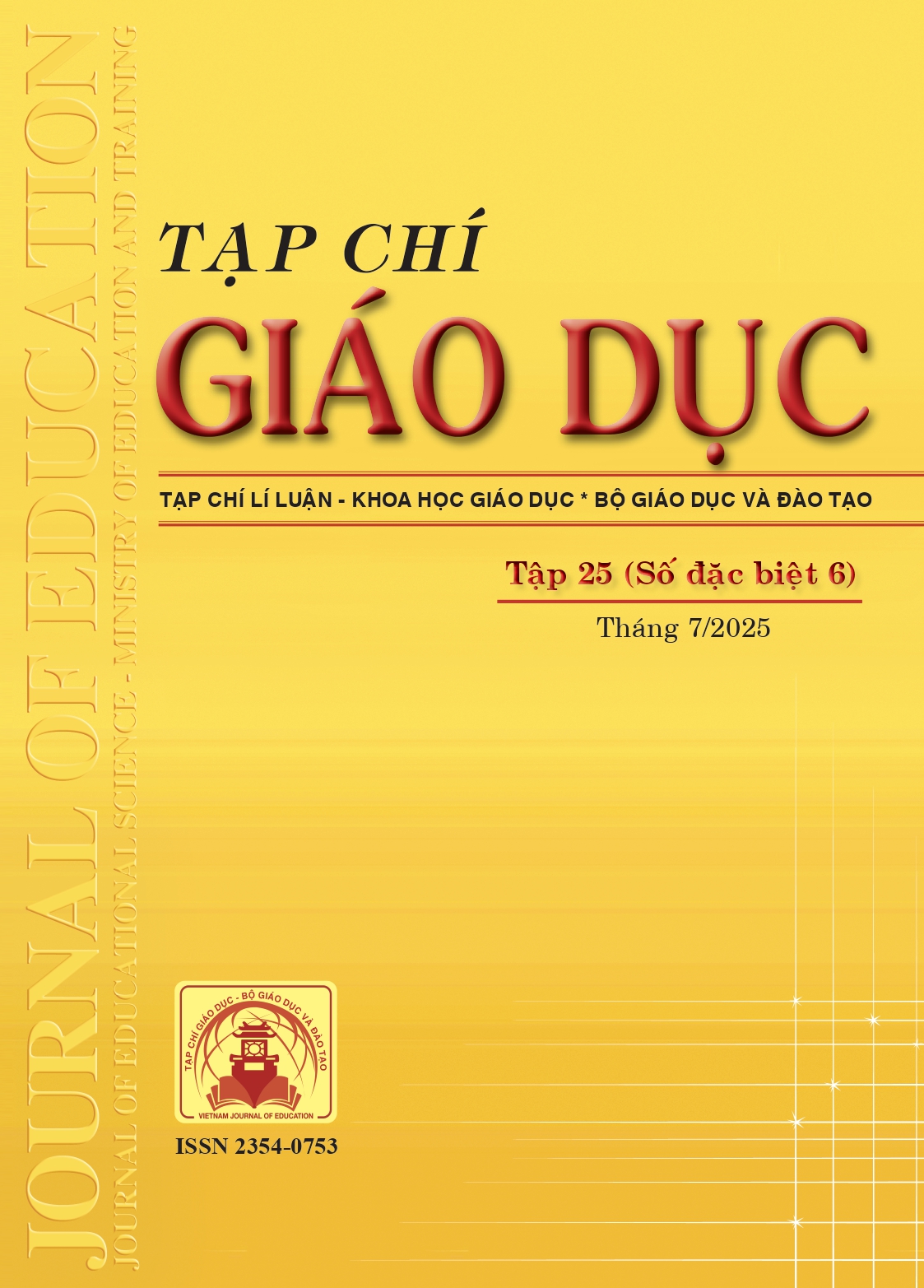Trải nghiệm nghệ thuật Origami của Nhật Bản với giấy dó của Việt Nam: hướng tiếp cận trong đào tạo sinh viên ngành giáo dục mầm non
Tóm tắt
In the context of educational innovation and increasing the application of creative teaching methods in preschool teacher training, the integration of Japanese Origami art with traditional Vietnamese Do paper material is studied as a new approach to develop pedagogical competence and creative thinking for students. The study was conducted on 128 third and fourth year students majoring in Preschool Education at a university in Hanoi, through practical paper folding activities in the professional training module. The survey results showed that students had a positive perception of the educational value of Origami in preschool education; most expressed interest in Do paper material, highly appreciated the aesthetics and cultural value of this material; however, students also encountered certain difficulties in terms of paper folding techniques and manipulation of “Do” paper material. Introducing Origami with “Do” paper into training students in Preschool Education is a potential approach, both developing pedagogical competence and contributing to preserving Vietnamese cultural values.
Tài liệu tham khảo
Agafonova, S. (2021). Implementation of Means of Art Pedagogy: Origami Classes with Long-Term Ill Children. Primary Education, 9(3), 15-18. https://doi.org/10.12737/1998-0728-2021-9-3-15-18
Andreass, B. (2011). Origami art as a means of facilitating learning. Procedia - Social and Behavioral Sciences, 11, 32-36. https://doi.org/10.1016/j.sbspro.2011.01.028
Barekat, N., & Abdolmaleki, F. (2024). The Effect of Using Origami to Reduce Aggression and Increase the Patience of 10-12-Year-Old Students. International Journal of Elementary Education, 13(4), 102-109. https://doi.org/10.11648/j.ijeedu.20241304.14
Boakes, N. J. (2020). Cultivating Design Thinking of Middle School Girls through an Origami STEAM Project. Journal for STEM Education Research, 3(2), 259-278. https://doi.org/10.1007/s41979-019-00025-8
Budinski, N. (2015). Origami and Technological Prospectives in Mathematical Education. Proceedings of ISIS Summit Vienna 2015 - The Information Society at the Crossroads, T1.1010. https://doi.org/10.3390/isis-summitvienna-2015-T1.1010
Chen, Y., Peng, R., & You, Z. (2015). Origami of thick panels. Science, 349(6246), 396-400. https://doi.org/10.1126/science.aab2870
Darmayanti, R., & Choirudin, C. (2022). Teaching kindergarteners creativity with “OCCUT”: Origami paper. Kepompong Children Centre Journal, 1(1), 55-67. https://doi.org/10.62031/kccj.v1n1.8
Harsismanto, J., Fredrika, L., Wati, N., Padila, Desri S. Y. (2021). Effectiveness of Playing Origami Intervention on Improvement of Fine Motor Development Pre School Children. Indian Journal of Forensic Medicine & Toxicology. https://doi.org/10.37506/ijfmt.v15i1.13565
Huang, C.-Y., Yu, Y.-T., Chen, K.-L., Lin, G.-H., & Hsieh, C.-L. (2023). Using Artificial Intelligence to Identify the Associations of Children’s Performance of Coloring, Origami, and Copying Activities With Visual-Motor Integration. The American Journal of Occupational Therapy, 77(5). https://doi.org/10.5014/ajot.2023.050210
Kennedy, J., Lee, E., & Fontecchio, A. (2016). STEAM approach by integrating the arts and STEM through origami in K-12. 2016 IEEE Frontiers in Education Conference (FIE), 1-5. https://doi.org/10.1109/FIE.2016.7757415
Matveeva, N. M. (2024). Origami as a means of developing speech in theatrical activities with children of preschool age. Novye Issledovania, 4(80), 52-56. https://doi.org/10.46742/2072-8840-2024-80-4-52-56
Misseroni, D., Pratapa, P. P., Liu, K., Kresling, B., Chen, Y., Daraio, C., & Paulino, G. H. (2024). Origami engineering. Nature Reviews Methods Primers, 4(1), 40. https://doi.org/10.1038/s43586-024-00313-7
Sarinastitin, E. (2018). Origami Folding Art Training for PAUD Mekar Madya Teachers in Momol Village, West Manggarai. RANDANG TANA-Jurnal Pengabdian Masyarakat, 1, 49-53.
Sokolova, G. (2021). Origami as a Means of Geometric Modeling: Environmental Approach to Self-Organization in Young Childhood. Bulletin of Kemerovo State University. Series: Humanities and Social Sciences, 2021(3), 229-237. https://doi.org/10.21603/2542-1840-2021-5-3-229-237
Walker, A., & Stankovic, T. (2022). Algorithmic design of origami mechanisms and tessellations. Communications Materials, 3(1), 4. https://doi.org/10.1038/s43246-022-00227-5
Đã Xuất bản
Cách trích dẫn
Số
Chuyên mục
Giấy phép

Tác phẩm này được cấp phép theo Ghi nhận tác giả của Creative Commons Giấy phép quốc tế 4.0 .












